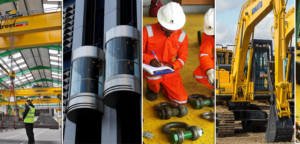
Training and assessing heavy equipment operators typically involve a structured program to ensure they are skilled, knowledgeable, and operate safely. Here’s an outline of what a heavy equipment operator assessment and training program might include:
1. Classroom Instruction
- Safety Procedures: OSHA regulations, PPE requirements, emergency procedures.
- Equipment Knowledge: Understanding the specific machinery (e.g., bulldozers, excavators, cranes).
- Maintenance Basics: How to inspect equipment, recognize maintenance needs, and report issues.
- Site Awareness: Understanding site maps, signals, and best practices for safe movement around a job site.
- Hazard Identification: Training on recognizing and mitigating on-site hazards.

2. Hands-On Training
- Controlled Environment: Practice in a controlled setting where the operator learns to handle the equipment.
- Basic Maneuvers: Training in starting, stopping, maneuvering, and controlling the equipment.
- Advanced Operations: Practicing complex maneuvers, such as lifting, digging, grading, and loading, based on equipment type.
- Problem Solving: Training for unexpected situations, like handling equipment malfunctions.
3. Simulation-Based Training (If Available)
- Simulations allow operators to practice high-risk scenarios in a safe environment, which can enhance response times and decision-making skills.
4. Assessment Criteria
- Practical Skill Test: Operators are observed while performing tasks to ensure they can safely and effectively operate the equipment.
- Written Test: Tests to verify their understanding of safety protocols, equipment maintenance, and operational knowledge.
- Observation and Evaluation: Operators are observed in a real work setting to ensure they can work efficiently and safely.
5. Certification and Documentation
- Upon successful completion, operators should receive certification confirming their skills and knowledge.
- Training logs should be maintained as a record of the operator’s skills, assessments, and any corrective actions taken during training.
6. Continuous Training and Re-Assessment
- Regular refresher courses to stay updated with new safety guidelines or machinery.
- Re-assessment is typically required every few years, or when equipment or site requirements change.
This framework ensures heavy equipment operators are fully prepared for real-world job sites and understand both the operational and safety aspects of their work.
